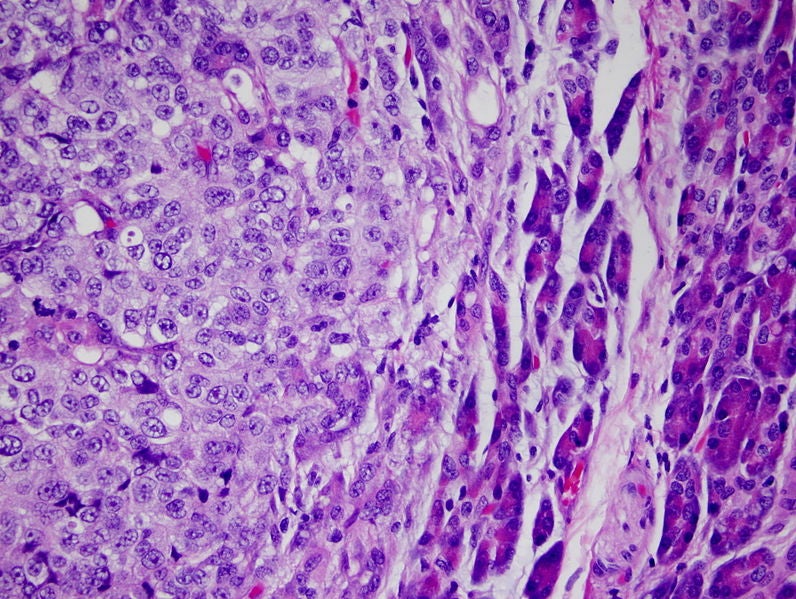Medical
science has made incredible advances in our lifetimes — but one sobering
truth remains. "If you look at the death rate from cancer, there's no
dramatic change over the last five decades," says David Agus, author of The End of Illness and the head of University of Southern California's Westside Cancer Center. "There are little wins, but no dramatic change."
On the plus
side, the incidence rate of cancer has gone down somewhat, as fewer
people smoke and some obvious carcinogens have been eliminated from the
environment.
It's true
that we've learned a lot more about cancer in the past 50 years — but
mostly what we've learned is that cancer is a lot more complicated than
we thought.
"We truly
grossly underestimated the cleverness of cancer," says Ralph deVere
White, director of the U.C. Davis Cancer Center. We're sequencing the
genomes of many cancers, and what you discover is that "regrettably,
they have many more molecular changes than we ever saw."
 Expand
Expand
Dr. White
adds that we've learned more about cancer in the past 10 years than we
had learned in the previous 2000 years. "Cancer never allowed us to get
so much information to address our inadequacy." And now, the challenge
is to "turn that data into knowledge," which requires a lot of
cutting-edge bioinformatics. (Too bad everybody's funding is being cut
right now, at a crucial time in cancer research.) Melanoma image via National Cancer Institute.
You
probably already know that cancer is not just one disease — it's many
diseases, gathered under a single umbrella. But in the past, we thought
there were types of cancer called "breast cancer" or "prostate cancer,"
which were basically site specific — and now we've found that cancer is
much more varied.
"Cancer is
hundreds if not thousands of different diseases," says David Weinstock,
an assistant professor with the Dana-Farber Cancer Institute and Harvard
Medical School. "Saying, 'Why don't we have a cure to cancer,' is like
saying, 'Why don't we have a cure to infection.'"
There are
multiple levels of complexity, adds Weinstock: You have different basic
types, like colon cancer versus lymphoma. Then you have hundreds of
different types of lymphomas, and then every single person's lymphoma is
different at a molecular level. And even though you think of cancer
cells as all identical, in fact "not every cancer is the same, [and]
there are many differences within a tumor." When you attack a tumor,
"you're killing a diverse population" of cells, some of which will be
resistant.
Most cancers under treatment have 100 different mutations within a single tumor, says Agus. "It's very hard to model that."
Meanwhile,
you have to kill the tumor without killing the person who has it. People
talk about the "therapeutic index," says Weinstock — which is the
chances of killing the tumor, versus the chances of killing a normal
cell.
Another
wrinkle: cancer cells are bi-directional, meaning that stem cells can
differentiate into mature tumor cells — but mature tumor cells can also
turn back into stem cells, says Agus. Thus, treatments that have
involved just killing the stem cells in the hopes that this would keep
the cancer from recurring have failed, because the tumor can always
repopulate with more stem cells.
No comments:
Post a Comment